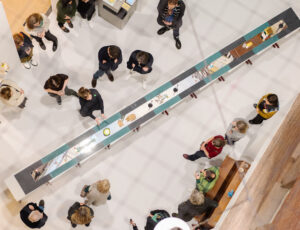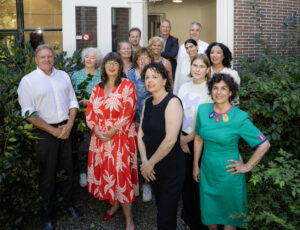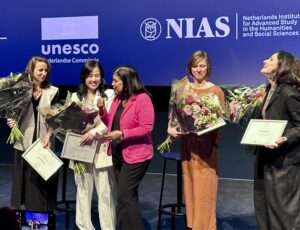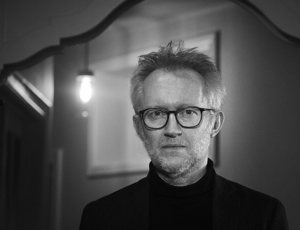Indissoluble link
This research has investigated the inextricably intertwined threads of language and culture (Cornips et al. 2012), and how these affect the production and reproduction of social differences and power relations between different groups. In most Western countries, there is one standard language which dominates politics, the media and education, and this means that other language varieties are relegated to a subordinate social and cultural status, even if they are spoken by sizeable proportions of the population. These language varieties, and the people who speak them, are often the object of heavy negative social stereotyping, and as a result, speakers of these varieties may end up feeling marginalized linguistically, politically and even economically. Our aim was therefore to deepen our understanding of the role played by languageculture in these processes of marginalization/centralization, not only on the national level, but also on a smaller scale, such as within a region or city. To do this, we looked at different case studies from Europe including the Netherlands, Belgium and former Yugoslavia.
Popular Culture in Limburg
Researchers Leonie Cornips, Vincent de Rooij and Irene Stengs took the example of popular culture in the public domain of the Dutch province of Limburg which is situated on the border between the Netherlands, Belgium and Germany. Cornips and De Rooij focussed on the wider context of this area which is particularly known for the vitality of its dialects. Dialects were once seen as anchoring people to specific places, however increasing globalization has meant that dialect has become a resource for indexing different social meanings such as gender, class, race/ethnicity, which are often instable and ambiguous. New media and language policies, along with the growing commodification of local languages make it increasingly common for public events such as the Limburg carnival to feature both individuals and institutions which (re)produce their own versions of local uniqueness. There may be disagreements on who/what is authentic, on who has the right to speak dialect or what kind of dialect they should speak, but all the parties under scrutiny in our research, unwittingly or otherwise, help to reproduce power inequalities.
One example of this is a popular band The Getske Boys who do identity by carnivalesque, serious play in which they rebel against dominant language norms (Cornips & de Rooij).
Here, Vincent de Rooij zoomed in on the question of how particular linguistic features and body techniques can be used to perform classed and or gendered social types identities. These identities are mobilized in performing ‘Self’ and ‘Other’, where Self and Other can alternatingly be linked to either center or periphery roles, depending on a person’s experience of who they are, or wish to be, in different times and places. The analysis of different public performances and interviews with the Getske Boys, showed how their creative and innovative exploitation of linguistic resources drew on the recognizable social type of a ‘bawdy’ male inhabitant of the former coalmining neighborhoods of the city of Heerlen. This social type is ambiguous; it simultaneously both attracts and repels the audience, and so furthers the reproduction of social and gender stereotypes.
Irene Stengs, meanwhile, focused on the interplay between globalization and cultural politics of local identity formation. Her case study was ‘André Rieu popular culture’, a collection of linguistic and cultural practices centring on the musician ‘Andre Rieu’. Rieu is a world famous musician and inhabitant of Maastricht, the capital of the Dutch province of Limburg. In his performances, Rieu plays around with his identity as a Maastrichtenaar/Limburgian (an inhabitant of Maastricht/Limburg) by using local language, local imagery and local cultural forms. Yet at the same time he has to be careful that his much larger foreign (mainly English-speaking) audiences will still understand and enjoy his act. As he switches continuously between the local language and English, Rieu’s local language acquires a different, ‘performance’ quality, which enables him to open up different channels to engage with ‘Limburgness’, ranging from direct nostalgia to ironic metacommentary on those who mock the local language and try to relegate Limburg and Rieu to peripheral status.
Parodies
Tanja Petrović’s work focused on linguistic and cultural identities and processes in former Yugoslav societies. During her time at NIAS, she focused on a 1970’s rock band who parodied a certain ideology of the time which suggested that dialects are inextricably linked to a particular place, and that (Serbian) peasants therefore do not belong to modern times or cosmopolitan cities. Parodists like this Yugoslav rock band or the Limburg Getske Boys use language in an exaggerated fashion forcing us to question these prevailing norms which assert the ‘authority’ or ‘authenticity’ of certain language forms, and consider whether these are either natural or desirable.
Kathryn Woolard’s work included an investigation of popular parodies of how Montilla, the president of Catalonia in 2006, speaks Catalan. These parodies were particularly popular in the new mass media. Montilla grew up speaking Spanish, and by his own admission is a ‘poor’ speaker of Catalan. He abolishes weak pronouns in Catalan and “the humor surrounding the weak pronouns recognizes, but also ironizes, the conceptualization of Catalan and Catalan nationalism as archaic, backward-looking, and belonging only to those who come by it natively” (Woolard et al. 2014).
Playful and Hybrid
Jürgen Jaspers focused his attention on a school classroom in Brussels. He examined how a teacher in this context could use playful language to lighten the mood from what might be expected in Dutch-medium schools in Brussels which typically have a large influx of non-Dutch-speaking pupils. The playful language in the teacher’s interactional practices included, for instance, asking for translations into Arabic or Turkish (Mr S: “How do you say ‘my ass’ in Turkish?”) or singing multilingual welcome songs (‘wilkommen, bienvenue, welcome!’), while also inserting bits of Italian, Spanish, German.
A rather different group which had a similar hybrid use of language was found among former coalminers in Belgian Limburg in Eisden. Here, the coalminers constructed a local identity, namely that of their neighbourhood – the cité – through hybrid language practices. Auer and Cornips showed that this hybridity, labelled Cité-Duits by the former coalminers, came about when they felt marginalized or excluded either geographically or socially. Moreover, focussing or sedimentation took place, resulting in hardly any linguistic variation probably due to a life long speaking in almost complete isolation. The language use of these former coalminers makes it very clear that it is extremely difficult to clearly delineate or identify the concept of a language like ‘Dutch’ or ‘German’ or ‘Limburg dialect’ in such a context.
Language Use as Social Praxis
In his research, Ad Backus focuses on the second generation of Turkish immigrants in The Netherlands. This group is typically bilingual, and Backus showed that the fact that Dutch plays a secondary role for them is related to the social evaluation of their language. Backus wanted to demonstrate when language use does or does not directly reflect social relationships and social action. Backus, Auer and Cornips come at language use in two ways: seeing it both as a social phenomenon linked to ideology, but also as a materialization of a grammatical system which offers an insight into why and how different actors (individual as well as institutional ones) traverse linguistic variation space, and stretch and cross its boundaries.
Time to Exchange and Combine Knowledge
Our NIAS stay was dedicated to comparing different case studies of different people in Europe whose language identity is tied to geographically less powerful areas, causing them to be marginalized socially. All these people struggle with dominant forces in society to a greater or lesser extent. NIAS has offered our theme group precisely what we needed: the opportunity to meet with colleagues from different disciplines and study, write and talk together about a theme that is inherently interdisciplinary. This opportunity is rare in normal academic life. Of course it is possible for researchers to meet at conferences but these meetings are brief, and rarely offer the chance to study together for a longer period. As our theme is both interdisciplinary and innovative, it was a great bonus to have not days but months together in order to exchange and combine knowledge and insights from sociolinguistics, cultural anthropology and linguistic anthropology. We hope that our combined research will lead in future to a more holistic theoretical model of dialectics of social practice and linguistic (languagecultural) form and ideology. We are very grateful to NIAS and especially to the great NIAS staff for their invaluable support during our stay in Wassenaar.
About the Authors
Leonie Cornips is Professor of Language culture in Limburg at Maastricht University and Researcher at the Meertens Institute. Vincent de Rooij is Assistant Professor of Anthropology at the University of Amsterdam. They coordinated the NIAS Theme Group “The construction of local identities through language practices”, in the academic year 2013/14.



